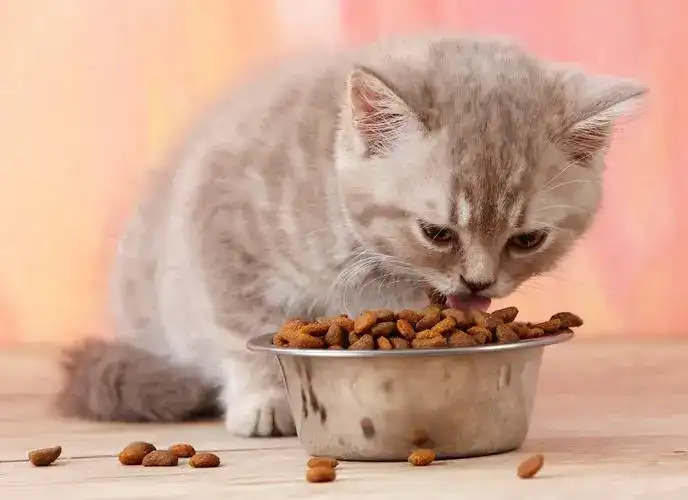As more people embrace the joys of cat ownership, many believe that cats are easy to care for—they just need food and water, right? While it may seem straightforward, feeding cats requires careful attention. Here are four common mistakes in cat feeding. Have you fallen into any of these traps?

Common Mistakes in Cat Feeding: 4 Errors Every Cat Owner Should Avoid
Keywords:
- common cat feeding mistakes
- cat nutrition
- proper cat feeding habits
- homemade cat food
- feeding guidelines for cats
- health risks in cats
The Importance of Proper Cat Feeding
Feeding your cat is more than just filling their bowl with kibble or opening a can of wet food. A good feeding routine can enhance your cat’s health and well-being, while poor feeding practices can lead to serious health issues. Let’s delve into the common mistakes cat owners make and how to avoid them.
1. Overfeeding Your Cat
Many cat owners, particularly those with busy schedules, often make the mistake of feeding their cats large quantities of food all at once. This can lead to significant health issues.
Health Risks of Overfeeding
- Obesity: Overfeeding is a primary cause of obesity in cats, which can lead to other serious health issues like diabetes, arthritis, and heart disease.
- Digestive Problems: Cats can suffer from digestive discomfort if they eat too much at once. This can result in vomiting or lethargy.
How to Prevent Overfeeding
- Portion Control: Use feeding guidelines provided on the food packaging as a baseline. Adjust portions based on your cat’s activity level and weight.
- Scheduled Feeding: Instead of free-feeding, establish regular meal times to control how much your cat eats throughout the day.
2. Frequent Treats and Snacks
Cats are naturally attracted to tasty treats, and it’s hard to resist their adorable faces when they beg for food. However, frequent snacking can lead to unhealthy habits.
Consequences of Overindulgence
- Picky Eaters: Excessive snacking can cause cats to become picky, leading them to refuse their regular food.
- Nutritional Imbalance: Treats often lack essential nutrients and can lead to an imbalanced diet if overconsumed.
Tips for Treating Your Cat
- Limit Treats: Keep treats to no more than 10% of your cat’s daily caloric intake.
- Healthy Options: Opt for healthier treat options or consider using their regular kibble as a treat.
3. Feeding a Plant-Based Diet
Cats are obligate carnivores, which means they require nutrients that are primarily found in animal products. Attempting to feed them a plant-based diet can have dire consequences.
Risks of a Vegetarian Diet for Cats
- Nutritional Deficiencies: Cats need specific nutrients such as taurine, arachidonic acid, and certain vitamins that are only found in animal products.
- Health Issues: Insufficient protein and other essential nutrients can lead to serious health issues, including heart disease and digestive problems.
Recommendations for Cat Diets
- Protein-Rich Diets: Always choose cat food that lists real meat as the first ingredient.
- Consult a Vet: If you’re considering a special diet for your cat, consult a veterinarian to ensure it meets their nutritional needs.
4. Inadequate Homemade Cat Food
The trend of feeding homemade cat food is growing, but many cat owners may not realize that it requires careful planning to be nutritionally balanced.
Common Pitfalls in Homemade Cat Food
- Nutritional Imbalance: Without proper research, it’s easy to create meals that lack essential nutrients.
- Health Risks: Homemade diets can lead to deficiencies or excesses in certain nutrients, causing long-term health problems.
Guidelines for Making Homemade Cat Food
- Research Recipes: Consult reliable resources or work with a veterinarian to develop balanced recipes.
- Nutritional Supplements: You may need to add supplements to ensure that your cat receives a complete diet.
5. Understanding Feeding Habits
Feeding your cat is not just about what you give them; it’s also about how you do it. Understanding feeding habits can enhance your cat’s overall well-being.
Establishing Healthy Feeding Habits
- Monitor Food Intake: Keep an eye on your cat’s weight and adjust portions as necessary.
- Encourage Hydration: Always provide fresh water, especially if feeding dry food, to help prevent urinary tract issues.
Conclusion
Feeding your cat is an essential responsibility that should not be taken lightly. By avoiding these common mistakes and educating yourself about proper feeding practices, you can help ensure that your feline friend enjoys a long, healthy life. Remember, a balanced diet tailored to your cat’s specific needs is key to their happiness and well-being.

Comments (0)